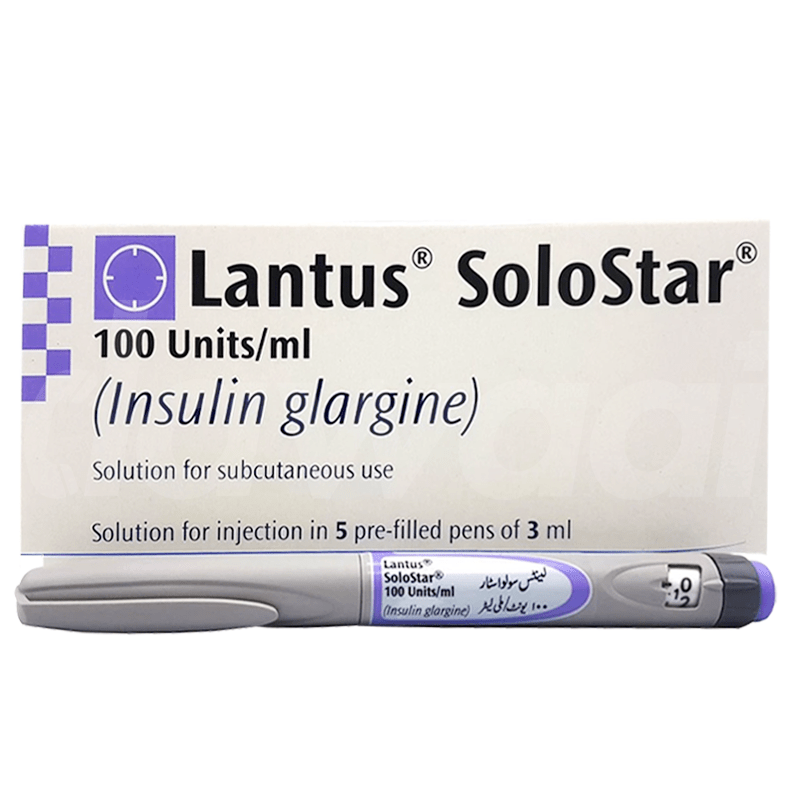Faqs
1. What is the difference between Basaglar and Lantus?
Both Basaglar and Lantus are insulin glargine derivatives. With no apparent difference, Basalgar is considered biosimilar to Lantus, and both can be used in the treatment of diabetes mellitus. The only minor difference is that they are marketed and manufactured by different companies.
2. What should I avoid while using Lantus Solostar 100 units/ml?
After administering Lantus Solostar 100 units/ml, please avoid driving and operating any machinery, as it may cause drowsiness or dizziness due to high or low blood sugar levels.
Also avoid consuming alcohol, and taking any other medicines without discussing them with your doctor first as they may impair Lantus Solostar’s effect on the body.
3. What other medicines should not be taken when using Lantus Solostar 100 units/ml?
Many medicines, herbal products, and vitamins can affect Lantus Solostar’s effect on blood sugar levels. Therefore, we recommend discussing your significant medical history and existing medical conditions (if any) before starting Lantus Solostar.
However, medicines like rosiglitazone and pioglitazone may impair the effect of Lantus Solostar or increase your risk of heart failure. Thus, please avoid the use of these medicines or use alternatives after consulting your doctor.
4. Where should I inject Lantus Solostar?
There are several regions where Lantus Solostar can be injected, including the following:
- Stomach area
- Top, outer thigh region
- Outer back of upper arms
Once you have decided on a region, pinch up a skin fold with your thumb and forefinger. Introduce the needle in the fatty tissue area, just under the skin, ensuring you are not injecting into a muscle or vein.
We suggest getting a demo from a nurse or doctor before self-injecting to ensure you are doing it correctly. Please refrain from injecting at the same area repeatedly or where the skin is lumpy, thickened, damaged, or around the spine.
5. Where should I avoid injecting insulin?
Please avoid injecting Lantus Solostar or any injectable insulin into a muscle, spine area, face, vein, scalp, navel, feet, and hands. The ideal sites are the abdomen, upper outer arm, and outer thigh (into the fatty tissue).
6. Where do I inject insulin when I am pregnant?
The best site to inject insulin in pregnancy is the outer thigh or outer, upper arm.
7. When is the best time to inject insulin?
The ideal time for injecting insulin is when you have been prescribed by a doctor. Your treatment does not have to be similar to anyone else’s as each treatment plan is designed according to the individuals’ blood sugar levels, response to treatment, severity of condition, etc.
The following are the main types of insulin:
- Rapid-acting: starts working in approximately 15 minutes, lasting for 3 – 5 hours.
- Short-acting Insulin: starts working in 30 – 60 minutes, lasting 5 – 8 hours.
- Intermediate-acting: starts acting in 1 – 3 hours, lasting 12 – 16 hours.
- Long-acting: starts working in about 1 hour, lasting 20 – 26 hours.
- Premixed insulin: combination of 2 types of insulin – rapid or short-acting and intermediate-acting insulin.
Discuss with your doctor which type of insulin is best for you with the ideal timings and route of administration.

![]() Prescription Required
Prescription Required







